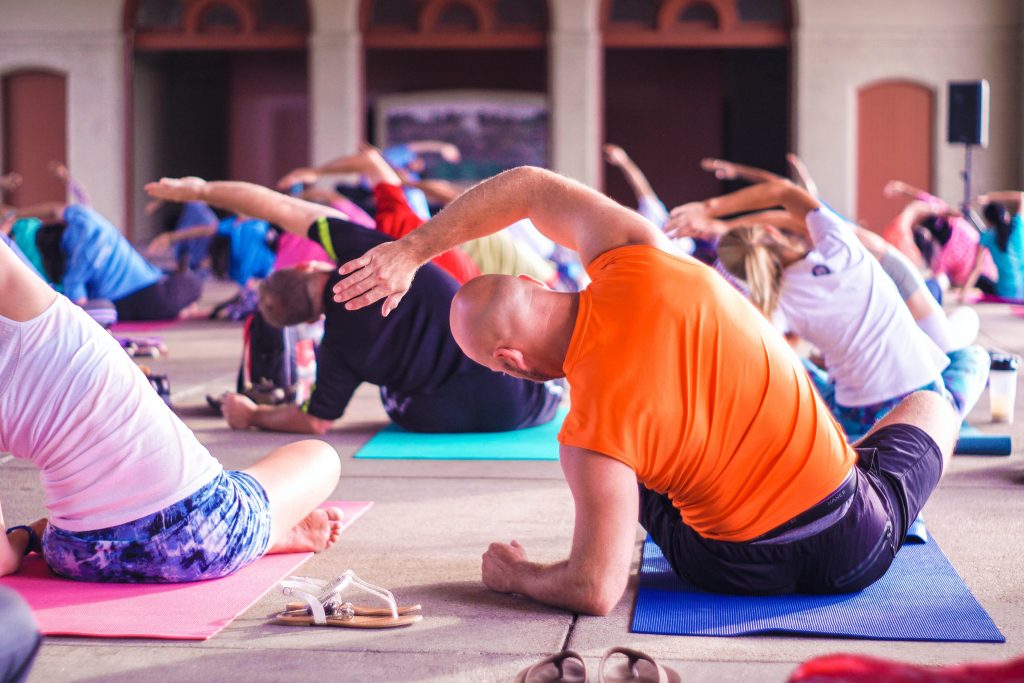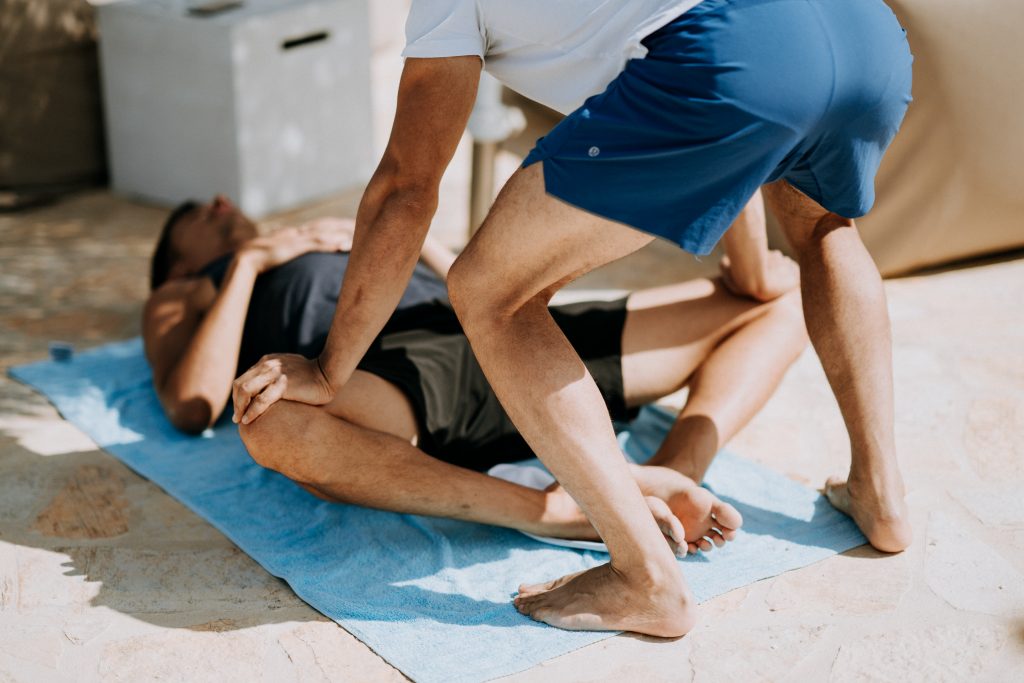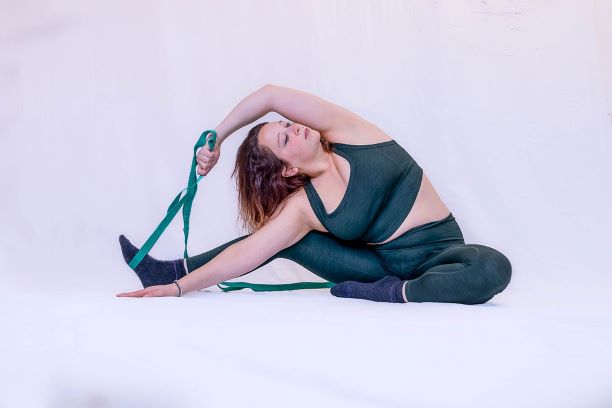Secrets To Real Flexibility & Lasting Strength
Resistance training helps increase flexibility, mobility, and strength. If we don’t stretch our muscles, the tension builds up, just like calories from food accumulate without cardio to consume them. Every day the growing strain can start to negatively affect your movement, either through injury or by limiting your ability to move the way you choose.
Resistance exercises wake up the brain-muscle connections to tap into our innate flexibility and strength. All of us, knowingly or unknowingly, use our muscles in specific patterns. This results in some muscles becoming overworked and some underworked or injured. Resistance exercises find and correct unhealthy muscle patterns by engaging the brain-muscle connection.
Infinity’s mission is to make resistance exercises a useful and accessible practice that anyone can include in their workout routine. Infinity’s flexibility and strength training can improve performance in any sport or activity. It can create flexibility in even the most stubborn of muscles. It builds strength in neglected muscles and reduces the risk of recurring injuries.
5 Resistance Training Techniques for Beginners
Once we know how to stretch, then we can work on finding the exercises that work best for our bodies. To start using stretching in your workout routine, here are 5 techniques to get you started.
1. Stretch after exercise using warmed-up muscles to remove tension.

Twenty minutes after you exercise, the aerobic technique works to remove tension resulting from vigorous exercise. An aerobic stretch session would use half of your existing strength for the first 8 out of 10-12 repetitions and full strength for the remaining 2-4 repetitions. The first is prepping your muscles for stretching, and the second is removing tension.
If done correctly, your muscles will not be sore from the previous day’s exercises. Instead, your muscles will be ready to push further and harder than the day before. This technique improves your results in high-intensity sports such as swimming or running.
Because resistance engages the muscle while extending, you get a stretch without the risk of pulling said muscle. The contraction of that muscle defines your range for the exercise and prevents an overstretching injury.
2. Engage balancing muscle groups that work together to create movement.
When we are exercising, all of our muscles have a job to do. Whether engaging or stretching, supporting or resting, our muscles are always adapting to meet our demands. You may already be aware of the effect imbalances have on the body. When injured, you may quickly realize that you are unconsciously protecting the injury by using the other side of the body much more often. Compensating can result in new imbalances. To fully recover, you have to address both the injury itself and the muscles on the other side of the body that are trying to help out. At Infinity, we often treat clients who come in with apparently inexplicable pain that we eventually trace back to injuries months or even years old.
Infinity aims to exercise balancing muscle groups to create stability in the body. Patterns of injury in our bodies are not a huge mystery. The body usually compensates predictably. Infinity specializes in knowing how to unravel compensatory issues and root out the cause of injury and pain. We can also teach you how to read the signs of imbalance in your own body.
3. Body awareness is a crucial first step in finding our limits.
You need to be aware of where you are feeling the stretch and, more importantly, when you are no longer able to provide resistance in an exercise. A good indication that a static stretch is too much for your body is feeling an ache in the joints or anywhere that a muscle connects to the bone.
Once you know which muscle you are trying to stretch, try contracting it from a relaxed position. I suggest laying flat on your back. If you are feeling experimental, try a stretch you are working on and engage the muscle then. For example, in a forward fold, you could try pressing down through the heels or front of the shins while reaching forward toward your toes.
Without body awareness, you can easily overstretch and injure yourself. You need to know your limits before you push beyond them. If you are new to resistance stretching, it may behoove you to start your flexibility journey with an experienced trainer. (Infinity is currently offering evaluations either via Zoom or in person.)
4. For resistance training modifications and limitations, work with an experienced trainer.

When you are adding a new style of stretching to your routine, you may want to seek out a certified trainer to help you with your new stretching regimen.
A resistance trainer will:
- Accelerate your progress
- Quickly see your limitations and know how to provide alternatives or modifications.
- Strategize either working on your impaired muscles directly or starting with the surrounding/opposing muscles instead.
- Use modifications when working with injured muscles.
An experienced flexibility trainer also knows when a body is ready for change and is familiar with both mental and physical resistance. They have experience with injuries and muscle limitations and know the best patterns to address both common and unique injuries. More importantly, a trainer is honest and forthright in their ability to help. Trainers have a vast network of modalities to refer to and can be a compliment to any healing team.
5. Self-stretching helps maintain the momentum gained from private trainer sessions.
Consistent home self-stretching is one of the best ways to start a new stretching practice or continue to build on your flexibility and strength gains from home. While working with a trainer, the trainer suggests exercises tailored to your muscles and goals. But once you start working into your muscles and develop self-awareness, you will begin to know what would be best for you on that day. The ultimate goal is for the client to understand what is happening in their body. Once you learn the skills and exercises to counter any problem with flexibility and strength training, then you consider yourself successful.
Self-stretching is a powerful practice. You can spend extra time on what feels good, figure out which exercises you are avoiding, and work on specific goals. The key is always listening to your intuition. The stretches you have been avoiding are probably the ones you need the most. All of your goals are attainable with resistance flexibility and hard work.
Schedule An Appointment to Get Started
In this new age of work from home, we want to offer online check-ins with Infinity via zoom for new self-stretching exercises or a consultation on your current at-home practice.
Whichever way you choose to add stretching to your routine, the point is that you DO IT, sooner rather than later. Conscious, active stretching WILL improve your flexibility and your strength. It keeps your muscles moving, boosts your immune system, and improves overall physical and mental health.
Take Action!
Learn more about flexibility and strength training or schedule an appointment today!
Emma Matthies
Related posts
3 Comments
Leave a Reply Cancel reply
Categories
- Flexibility & Strength (13)
- Healing for Meridians (10)
- Holistic Lifestyle (5)
- Lymphatic Drainage (7)
- Massage (4)
- Meridian Archetypes (19)
- Spiritual (1)
- Traditional Chinese Medicine (12)


[…] Want to learn more about resistance and how you can incorporate it into your workout regime? Stay tuned for our follow up post on Resistance Stretching Techniques. […]
[…] Want to learn more about resistance and how you can incorporate it into your workout regime? Stay tuned for our follow-up post on Resistance Stretching Techniques. […]
[…] Want to learn more about resistance and how you can incorporate it into your workout regime? Stay tuned for our follow-up post on Resistance Stretching Techniques. […]